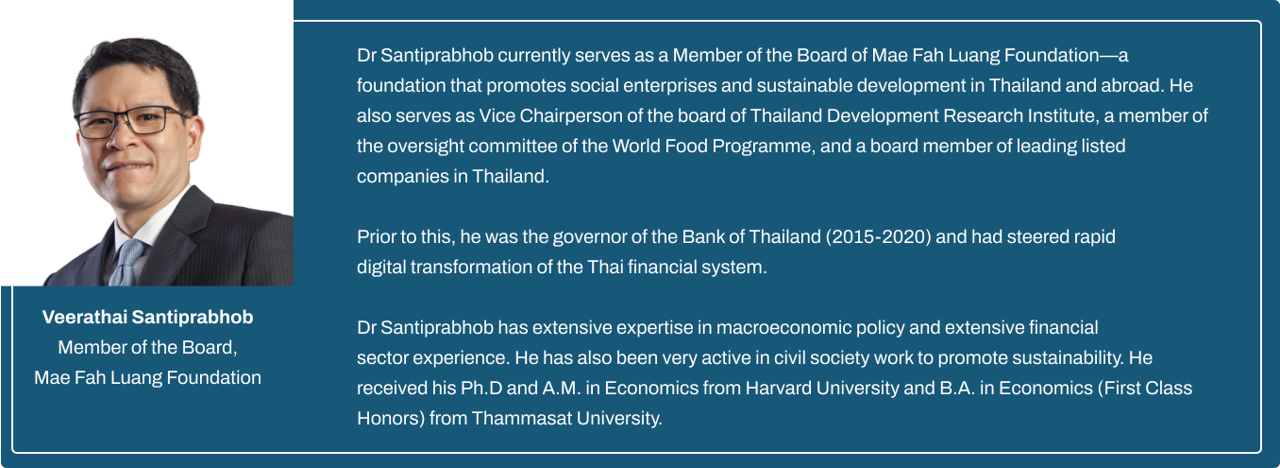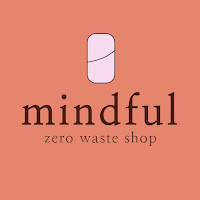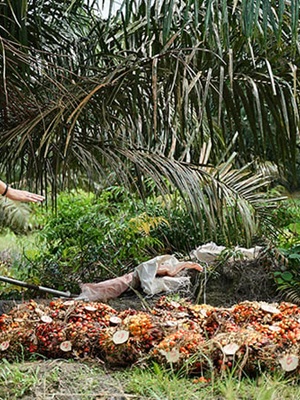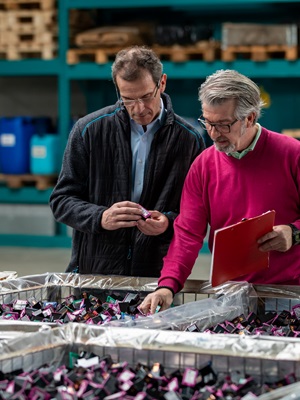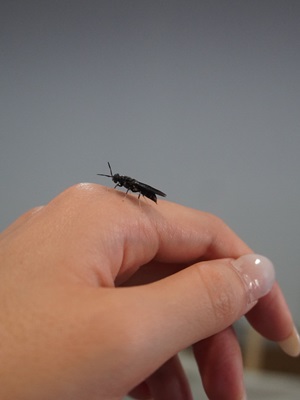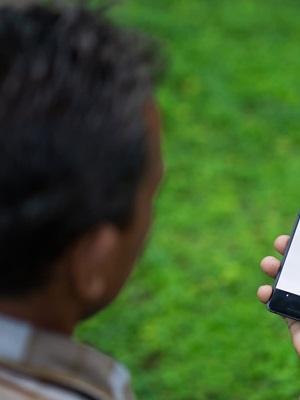Embarking on the path of zero waste living in a small Malaysian town, like Miri, brought its fair share of challenges. The absence of a community made the initial steps feel lonely, and the curious glances from locals sometimes made me question my choices. However, my journey into zero waste began with a revelation during my final year project in fashion design—textile pollution was a significant contributor to environmental harm (Bailey et al., 2022).
In 2021, I decided to actively participate in the Zero Waste Malaysia movement, volunteering to contribute my efforts. This marked the official commencement of my zero-waste lifestyle, guided by the 7R principle—the beacon illuminating the path toward responsible waste management. The primary focus is crystal clear: prevent or prolong waste from reaching landfills, thereby averting potential harm to the environment and its inhabitants.
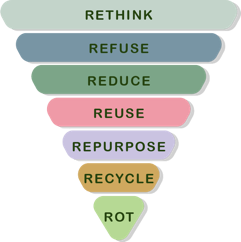
Discovering the 7R Principle: A Path to Zero Waste Mastery
At the core of the zero-waste philosophy lies the 7R principle, originally introduced by Bea Johnson as 5R Johnson (2013) and subsequently expanded by Jestratijević into 7R (Jestratijević et al., 2022). This principle serves as a comprehensive guide to waste management, escorting individuals through each tier and ensuring their waste aligns with the corresponding principle. The journey unfolds with the refusal of unnecessary items, followed by the reduction of consumption, and the imaginative reuse of existing possessions.
Each tier—rethink, refuse, reduce, reuse, repurpose, recycle, and rot—lays out a roadmap to achieve the goal of zero waste, contributing to the overarching objective of minimizing waste that reaches landfills, a true menace to the environment and its inhabitants. A substantial amount of the substances found in landfill leachates is hazardous and toxic to human health and the environment, underscoring the critical importance of adopting sustainable waste management practices (Vaverková, 2019).
The First Step of Zero Waste: Rethink
Similar to the concept of minimalism, rethinking helps me to take my time before making any purchase, thus contributing to the circular production loop rather than the linear one. An economic system that is intended to maximize resource extraction and minimize waste generation for disposal is known as a circular economy (Deutz, 2019). Every action we take is a part of the linear production process, and I try to think twice before jumping into any loop, possibly trying to jump into a circular one instead. When purchasing something, I ponder: Do I really need it? If online, I place it in the cart for a few days before purchasing, research online for reviews before proceeding to check out, or contemplate how I will handle it at the end of its life. It is a constant practice of a conscious mind, to really look at myself and find out what I really need or want.
Refuse, Reuse, Reduce: The Foundation of Zero Waste
Refuse Single-Use Plastic: A Pivotal First Step
The first steps in my zero-waste journey revolved around the fundamental principles of refuse, reuse, and reduce. Refusing single-use plastic packaging by bringing my own containers and bags (BYOC/BYOB) was not just a practical move but a statement of commitment to a sustainable lifestyle.
Creative Reuse: Embracing What You Already Have
A rule of thumb is to creatively reuse existing items rather than immediately resorting to purchasing new, labelled "ECO" products. Encourage creativity by repurposing existing possessions. A beautiful bag or container might already reside in your home, waiting to be rediscovered for a new purpose.
Reduce Through Minimalism: Quality Over Quantity
Simultaneously, I embraced the concept of minimalism. According to Kang et al. (2021), minimalism is a sustainable way of living that includes doing away with clutter, shopping with caution, utilizing things for as long as possible, and learning how to live independently (Blackburn et al., 2023). Minimalism becomes a guiding philosophy in the pursuit of zero waste. Creating a shopping list, contemplating the longevity of purchases, and minimizing overconsumption are pivotal aspects. By adopting a minimalistic approach, I found that less truly is more.
In the spirit of minimalism, repairing items instead of discarding them contributes to waste reduction. Appreciating and maintaining what you own not only extends the lifespan of your possessions but also showcases gratitude for the resources that went into creating them.
Repurposing and Thrifting: A Community Approach
Repurposing: Finding New Purpose
Beyond reusing items, repurposing involves finding alternative uses or homes for possessions. Freecycling groups, second-hand apps, and thrift shops provide avenues to repurpose and give away items, fostering a sense of community.
Thrifting: A Sustainable Shopping Alternative
Shifting towards second-hand shopping has become a key aspect of my zero-waste journey. Thrift stores, freecycling groups, and online platforms not only provide sustainable alternatives but also contribute to the vitality of the community. Embracing second-hand items has proven financially beneficial and environmentally friendly (Lane, R., 2009) (Borusiak et al., 2020) (Padmavathy, 2019) (Kawulur et al., 2022).
Recycling: The Last Resort
While recycling is often hailed as a solution to waste management, its limitations must be acknowledged. Not all materials can be effectively recycled, and there’s not enough recycling centers to recycle all types of materials. The bulk of recyclers in Malaysia have noted that the processes involved in recycling are expensive, time-consuming, and require a lot of energy when dealing with mixed, multi-layered, and contaminated plastics (Chen et al., 2021). As such, I advocate for recycling as a last resort, emphasizing the importance of reducing and reusing before resorting to recycling. Segregate waste responsibly and send it to local recycling centers, but be aware of its limitations.
Embracing Rot: Composting for Sustainability
As someone with a passion for planting, composting became a cornerstone of my zero-waste lifestyle. Beyond merely reducing food waste, composting transformed organic matter into valuable soil, enriching my garden. Exploring various composting methods, such as Bokashi, hot compost, worm bins, and community gardens, allowed me to turn kitchen scraps into "black gold." This sustainable closed loop (Sulewski et al., 2021) not only benefits the environment but also fosters a deeper connection with nature through the cultivation of personal food sources.
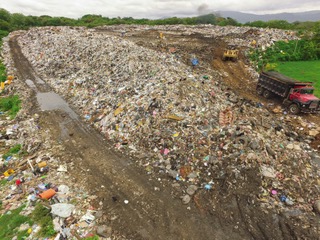
Conclusion: Small Steps Toward a Greener Future
In conclusion, my journey toward a zero-waste lifestyle in a small town emphasizes the importance of starting small and gradually expanding one's efforts. While facing challenges in a community with limited resources, I discovered the power of individual actions in influencing and building a sustainable community. Remember, change begins at the individual level, and imperfect steps collectively create a significant impact. As we navigate the intersection of corporate, government, and individual responsibilities, let us focus on what we can control and influence for a brighter, greener future.
References
Bailey, K., Basu, A., & Sharma, S. (2022). The environmental Impacts of fast fashion on water Quality: A Systematic review. Water, 14(7), 1073. https://doi.org/10.3390/w14071073
Blackburn, R., Leviston, Z., Walker, I., & Schram, A. (2023). Could a minimalist lifestyle reduce carbon emissions and improve wellbeing? A review of minimalism and other low consumption lifestyles. WIREs Climate Change. https://doi.org/10.1002/wcc.865
Borusiak, B., Szymkowiak, A., Horská, E., Raszka, N., & Żelichowska, E. (2020). Towards Building Sustainable Consumption: A Study of Second-Hand Buying Intentions. Sustainability, 12(3), 875. https://doi.org/10.3390/su12030875
Chen, H., Nath, T. K., Chong, S., Foo, V., Gibbins, C., & Lechner, A. M. (2021). The plastic waste problem in Malaysia: management, recycling and disposal of local and global plastic waste. SN Applied Sciences, 3(4). https://doi.org/10.1007/s42452-021-04234-y
Deutz, P. (2019). International Encyclopedia of Human Geography (2nd ed.). Elsevier.
Jestratijević, I., Maystorovich, I., & Brodnjak, U. V. (2022). 7 R’s of Sustainable Packaging Framework – Systematic Review of Sustainable Packaging Solutions in the Apparel and Footwear Industry. Breaking Boundaries. https://doi.org/10.31274/itaa.13592
Johnson, B. (2013). Zero Waste home: The Ultimate Guide to Simplifying Your Life. Penguin UK.
Kawulur, A., Sumakul, G., & Pandowo, A. (2022). Purchase Intention of Second-Hand: A case study of Generation Z. SHS Web of Conferences, 149, 02026. https://doi.org/10.1051/shsconf/202214902026
Sulewski, P., Kais, K., Gołaś, M., Rawa, G., Urbańska, K., & Wąs, A. (2021). Home Bio-Waste Composting for the circular economy. Energies, 14(19), 6164. https://doi.org/10.3390/en14196164
Vaverková, M. D. (2019). Landfill Impacts on the Environment— review. Geosciences, 9(10), 431. https://doi.org/10.3390/geosciences9100431
Posted 20/03/2024
